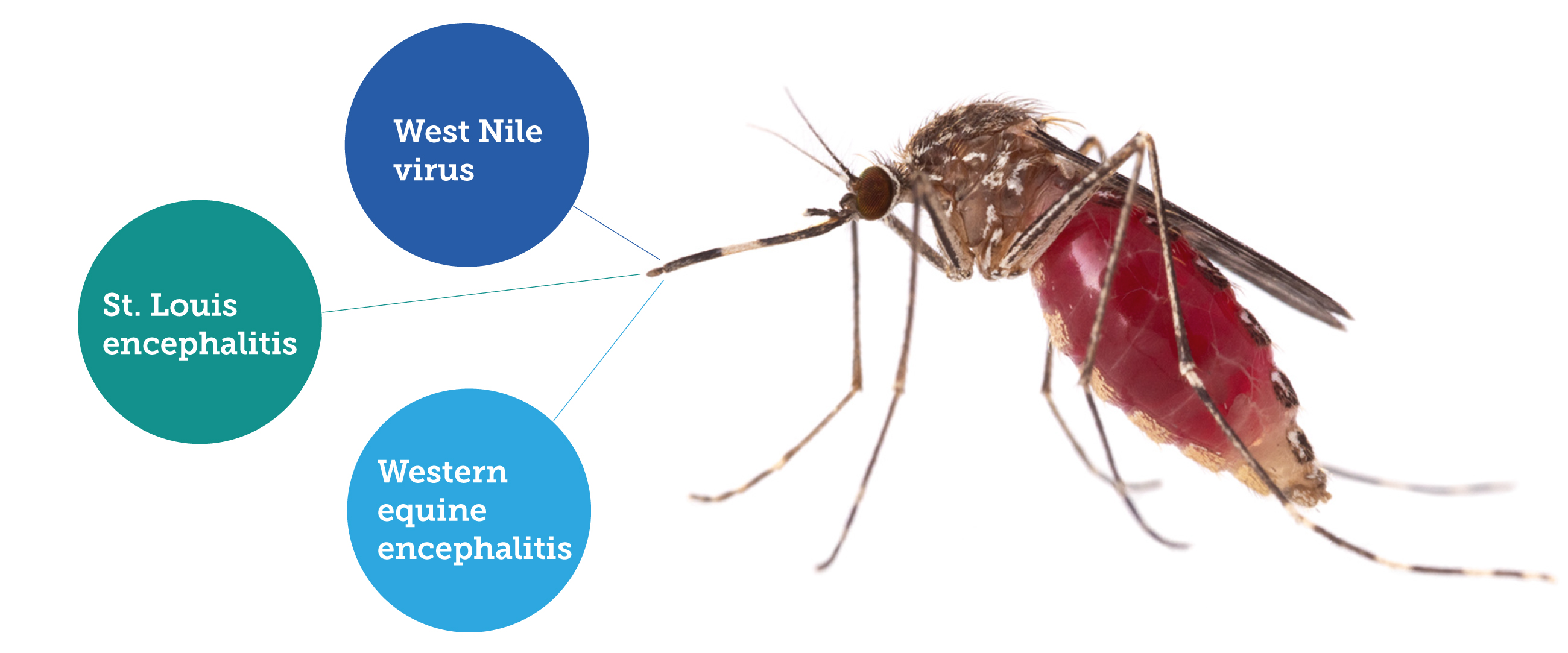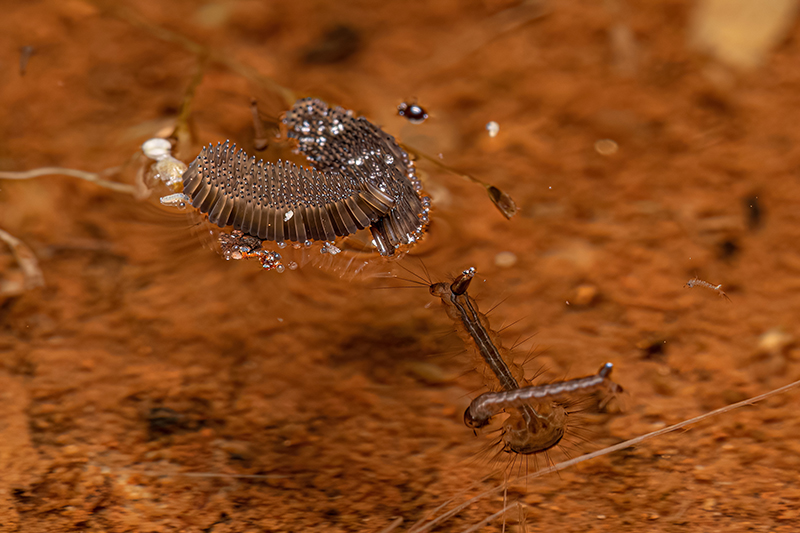Greetings, fellow explorers of the entomological universe! Today, we delve into the intricate world of a particular mosquito species that, despite its diminutive size, casts a significant shadow in the public health landscape – Culex tarsalis.
An introduction to Culex tarsalis
Culex tarsalis is an unsolicited night visitor known for its predilection for twilight feasts. This species has carved a niche for itself in the annals of medical entomology, primarily as a vector of viral diseases, including West Nile virus, St. Louis encephalitis, and Western equine encephalitis.

The Fascinating and Fearsome Traits of Culex Tarsalis
The life of Culex tarsalis is a testament to the complex interplay of evolution and ecology. It’s a story of adaptation and survival, demonstrating both the fascinating and fearsome facets of the natural world.
Fun Fact: Consider this: Culex tarsalis is a long-distance traveler. With the ability to fly up to 15 miles from their breeding site, these mosquitoes demonstrate a remarkable capacity for mobility. This characteristic underscores their potential to spread diseases across substantial distances, highlighting the importance of strategic mosquito control measures.
Not So Fun Fact: Unfortunately, the Culex tarsalis is one of the most efficient vectors of West Nile virus. This virus, known for its potential to cause severe neurological illnesses, puts this mosquito species squarely in the focus of public health officials.
Habitats: The Dance of Survival
The habitats of Culex tarsalis reflect a fascinating dance of survival and adaptation. These creatures prefer rural and suburban areas, often breeding in temporary pools, irrigation ditches, and agricultural runoff. Moreover, they have developed a knack for exploiting artificial containers, turning our backyards into potential breeding grounds. This adaptability underscores the importance of habitat management in mosquito control strategies.

Unveiling the Arsenal: Larvicides and More
When it comes to controlling Culex tarsalis, the approach is as multifaceted as the creature itself. We employ a range of strategies, from deploying larvicides to managing habitats, each piece of the puzzle working synergistically to form an effective control strategy.

In the spotlight this month is VectoMax FG, a granular larvicide featuring a combination of Bti and Bs. These naturally occurring bacteria are toxic to mosquito larvae, providing an environmentally friendly approach to mosquito control.

Another prominent player in our arsenal is MetaLarv SP-T, a larvicide that prevents larvae from maturing into adult mosquitoes, thereby disrupting the cycle of reproduction and reducing mosquito populations over time.
However, the battle against Culex tarsalis extends beyond the realm of larvicides. An integrated Mosquito Management (IMM) approach encompasses public education, habitat modification, biological control, and adulticiding to form a comprehensive mosquito control strategy.
A Deeper Dive into Mosquito Control
Understanding mosquito control is not merely about the deployment of chemicals; it’s about delving deeper into the life cycles, behaviors, and vulnerabilities of these creatures. For instance, Culex tarsalis mosquitoes tend to rest in vegetation during the day. Therefore, habitat management that includes regular trimming of foliage can reduce resting sites for adult mosquitoes, thereby contributing to control efforts.

Similarly, understanding the breeding habits of Culex tarsalis is crucial for effective larvicide application. Since these mosquitoes lay their eggs on the surface of stagnant water, ensuring timely larvicide application can help keep the population in check. If larvicides are applied when the eggs are first laid, they can prevent the larvae from maturing into adult mosquitoes and thus break the cycle of disease transmission.
Disease Implications and The Need for Vigilance
Given the role of Culex tarsalis in the transmission of diseases like West Nile virus, St. Louis encephalitis, and Western equine encephalitis, maintaining vigilance and control over this species is of utmost public health importance. These diseases can lead to severe neurological complications and, in some cases, can be fatal. Therefore, the importance of successful mosquito control strategies cannot be overstated.
Public Engagement and Education
One of the most effective weapons in our fight against Culex tarsalis is public education. By raising awareness about the breeding habits of this species and the diseases they can transmit, we can encourage the public to take an active role in mosquito control. This includes simple practices such as eliminating standing water in their surroundings, using mosquito repellents, and wearing protective clothing, especially during the mosquito feeding times at dawn and dusk.
The Future of Mosquito Control
The battle against Culex tarsalis is ongoing. With advancements in technology and a deeper understanding of mosquito behavior and ecology, new methods of mosquito control are continuously being developed. These include innovative larvicides, more effective adulticides, and novel methods of habitat management.

Conclusion
Understanding and controlling Culex tarsalis is a multifaceted challenge that requires a comprehensive and integrated approach. Through a combination of larvicides, adulticides, habitat management, public education, and ongoing research, we can hope to keep this formidable mosquito species in check, thereby safeguarding our health and well-being.
As we continue to explore the unseen world of mosquitoes, it is our hope that these insights will serve as a useful guide, bringing us one step closer to unraveling the intricacies of Culex tarsalis and its kin, and equipping us with the knowledge to mitigate their impact on public health.

 Azelis A&ES has technical experts that can help you select the right solution to control problem vectors in your region. We are ready to share our knowledge and experience with you!
Azelis A&ES has technical experts that can help you select the right solution to control problem vectors in your region. We are ready to share our knowledge and experience with you!